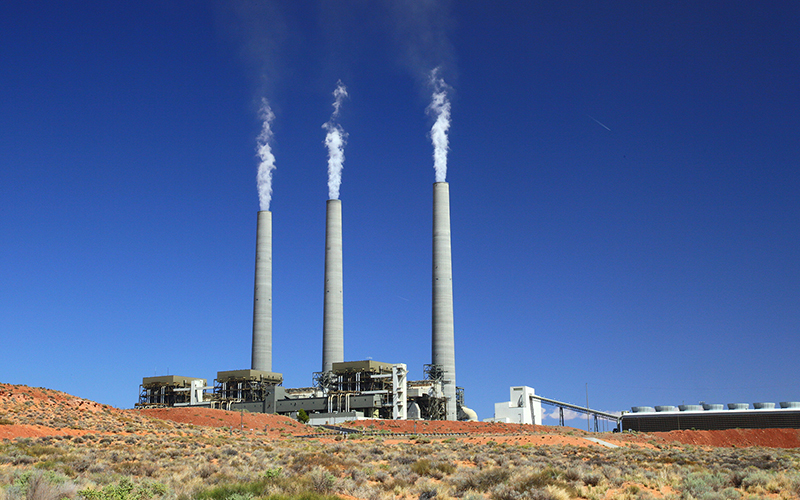
The Navajo Council agreed to terms with owners of the Navajo Generating Station that will begin the process of closing down the plant, which employs thousands in the area. But the agreement keeps the plant running until 2019 instead of an earlier shutdown. (Photo by Bill Morrow/Creative Commons)
WASHINGTON – The lights will stay on at the Navajo Generating Station until 2019 as the Navajo Nation Council voted 18-4, after hours of debate Monday, for a new agreement with the plant’s operators.
The new lease agreement allows for decades of decommissioning work to begin in 2019 and includes amendments giving the tribe control of water to the plant and some of its assets.
It also includes a requirement that the tribe waive its sovereign immunity and subject itself to the purview of federal courts in matters pertaining to the station, which was a source of much of the council debate.
But the alternative to ceding judicial sovereignty would have been early closure of the plant, which would have resulted in the loss of thousands of jobs by the end of 2017.
Still, Monday’s vote was a bitter pill for some Navajo groups who said the council’s decision “weakens” the nation’s ability to control the plant.
“With this agreement, the Navajo Nation had their hands tied behind their back,” said Adella Begaye in a statement from Diné CARE, a grassroots environmental group in the Navajo Nation.
The power plant currently employs roughly 3,000 people, mostly Navajo, and operates on Navajo land. If a new lease agreement had not been reached by the end of June, the plant’s owners said the facility would have been shut down.
The owners, NGS Partners, are Salt River Project, Arizona Public Service Co., Tucson Electric Power and NV Energy.
Jackson Brossy, the executive director of the Navajo Nation Washington Office, said the NGS Partners have offered to relocate workers elsewhere in Arizona but added that a move off tribal land would be a hardship for any family involved.
The coal-fired power plant is fed by the nearby Kayenta Mine. The plant’s primary customer is the Central Arizona Project, which provides water to Phoenix, along with others.
SRP announced this year that it would close the plant due to the rising costs of operating a coal-fired plant at a time of plummeting natural gas prices.
Nadine Narindrankura of the Tó Nizhóní Ání group called the council’s decision to continue work with the coal-powered station “ludicrous.”
“Tying our people to a sinking ship will only bankrupt us and put off the inevitable for two short years,” Narindrankura said in a statement from the group.
Brossy said the Navajo are looking at other forms of power at a “high level.” But he was unsure if the NGS area was good for wind power and, without access to the already-dammed Lake Powell, hydroelectric power was also off the table.
“We’re looking at solar and natural gas, but as of today we don’t have any final plans on any type of generation,” Brossy said.
Jessica Keetso, another member of Tó Nizhóní Ání, said in a statement that “the nation as a whole needs to make a commitment to transitioning our economy, energy production and leadership.”
“It’s the only thing that makes sense and it will be one of the only good things to come from this senseless replacement lease,” Keetso said.
Brossy assures that Navajo leadership is taking modernization efforts “seriously.”
“We’re taking the time and energy to make sure our people are looked out for and that our people are not collateral damage for the plant shutting down prematurely,” he said.